#tomb of meritamun
Explore tagged Tumblr posts
Text

Book of the Dead for the Chantress of Amun Nauny - Met Museum Collection
Inventory Number: 30.3.31 Third Intermediate Period, Dynasty 21, ca. 1050 B.C. Location Information: From Egypt, Upper Egypt, Thebes, Deir el-Bahri, Tomb of Meritamun (TT 358, MMA 65), burial of Nauny, first corridor, inside Osiris figure, MMA excavations, 1928–29
Description:
This papyrus was part of the burial of Nauny, a Chantress of the god Amun-Re who died in her seventies. She also bore the title "king's daughter," which probably means that she was a child of the High Priest of Amun and titular king of the Theban area, Painedjem I.
On the papyrus are images and texts from a number of spells. The central scene illustrates Spell 125, better known as the Judgment of Osiris or The Weighing of the Heart. Nauny is in the Hall of Judgment. (...) Behind Nauny stands the goddess Isis, both wife and sister of Osiris. She is identified by the hieroglyph above her head.
#Book of the Dead for the Chantress of Amun Nauny#third intermediate#dynasty 21#upper egypt#thebes#deir el bahri#deir el-bahri#tomb of meritamun#met museum#30.3.31#womens clothing#TIWC#deities#deitiesw#aset
6 notes
·
View notes
Text

Inner coffin of Ahmose-Meritamun
The inner coffin depicts the queen in the form of a mummy. She wears Hathor wig that ends with two locks and a broad collar. The eyes and the eyebrows are inlaid. The lid is covered with rishi, or feather design. There is a long hieroglyphic text in the center on the lid. The text is asking that the queen be granted, "Invocation offerings consisting of bread and beer, oxen and fowl, alabaster and clothes, all things good and pure on which the gods live. To the Spirit of the Reverend, the king's Daughter, the Priestess, the king's great Wife, Ahmose-Meritamun, Honoured with Osiris." New Kingdom, early 18th Dynasty, ca. 1525-1504 BC. Tomb of Ahmose-Meritamun (TT358), Deir el-Bahari, Thebes. Now in the Egyptian Museum, Cairo. JE 53141 Photo: ddenisen (CC BY-SA 2.0) Read more
125 notes
·
View notes
Text

Coffin of Ahmose-Meritamun
The Outer coffin of Queen Ahmose-Meritamun, made of cedarwood, from the Tomb of Queen Ahmose-Meritamun (TT358) at Deir el-Bahari, West Thebes. She was both the sister and the wife of pharaoh Amenhotep I.
New Kingdom, early 18th Dynasty, reign of Amenhotep I, ca. 1525-1504 BC. Now in the Egyptian Museum, Cairo. JE 53140 https://egypt-museum.com/mummy-of-queen-ahmose-meritamun/
311 notes
·
View notes
Text
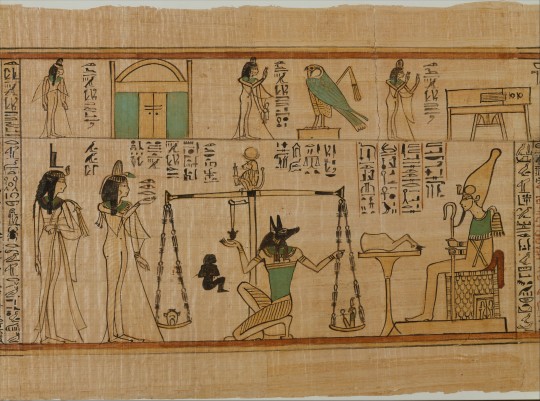
Book of the Dead for the Chantress of Amun Nauny
Metropolitan Museum of Art, Egyptian Art Collection
On view at The Met Fifth Avenue in Gallery 126
Period: Third Intermediate Period
Dynasty: Dynasty 21
Date: ca. 1050 B.C.
Geography: From Egypt, Upper Egypt, Thebes, Deir el-Bahri, Tomb of Meritamun (TT 358, MMA 65), burial of Nauny, first corridor, inside Osiris figure, MMA excavations, 1928–29
Medium: Papyrus, paint
Dimensions: L. 521.5 cm (206 5/16 in); H. 35 cm (13 3/4 in)
Accession Number: 30.3.31
5 notes
·
View notes
Text
Anniversary of Schiaparelli's discovery of Nefertari's tomb
The Italian antiquities mission led by Cecchiaparelli discovered Queen Nefertari's tomb in 1904 Today marks the anniversary of the discovery On that day, the world witnessed a rare emergence of ancient Egyptian art, in which many mysteries were revealed Since its discovery.
In 1904, Nefertari's tomb remained closed to the public until the early 1990s because of salt deposition that damaged some of the inscriptions and embellishments. The tomb's entrance is orientated towards the east The sky is reflected in the cemetery's ceiling At night, the sky is dark and dotted with golden stars It has a bluish tint and is dark black in color as opposed to the god Anubis's complete black hue you can check more details about Egyptian beauty and Egyptians tours through Egypt Day Tours. The tomb is filled with colorful frescoes and inscriptions, and a wall mural shows the queen playing a chess-like game.
Nefertari means "the beautiful companion," and the name has other translations such as "the unparalleled beloved," "the beautiful of the world's beauties," or that she resembles the star that emerges at the start of a new year. Nefertari is one of the most well-known Egyptian queens, such as Cleopatra, Nefertiti, and Hatshepsut During the 13th century BC, during the Nineteenth Dynasty, King Ramses II had the most well-known and significant wife, Nefertari if you want to know more about Egyptian historic and tours you can check cairo top tours Egypt Travel Packages with best prices. ramses other wives included the Hittite princess Matneferu Ra and Setneferet. His progeny totalled over 90 boys and daughters. Among his offspring were Prince Khawaset, Setnakht, King Merneptah who succeeded him, and the princesses Bint-Anta and Meritamun, who were the brides of their fathers For Ramesses, Nefertari had numerous offspring, but none of them outlived their father .
Nefertari died in 1250 BC, however, this is not clear because she most likely died between the ages of 40 and 50, implying that she died after ruling for approximately 25 years Her husband, Pharaoh Ramesses II, built her the largest and most beautiful tomb in the Valley of the Queens, which is both unique and a fantastic example of clever ornamentation you can involve into nifrtari life and explore more secrets through Egypt Desert Safari Tours your best choice mausoleum was embellished with beautiful colors and artwork depicting her daily life.
IN 1986, the Getty Conservation Institute collaborated with the Supreme Council of Antiquities to restore this unique tomb, which was then opened to the public for a restricted number of visitors, check more info and incredible tours via Egypt Shore Excursions to find out the best tours However, in March of this year, the tomb was closed to monitor humidity levels and assess the feasibility of reopening it under controlled conditions to safeguard it from potential damage caused by excessive visitor traffic.
TO summarize, during egypt tours you can discover egypt secrets the Egyptian civilization represents unprecedented creativity in the globe, generated by the hands of ancient Pharaohs who built temples, pyramids, and statues.
@cairo-top-tours
1 note
·
View note
Text
Today we will talk about a list and names of the kings of ancient Egypt. The first dynasty ruled from about 3150 to 2890 BC. M. It is the first dynasty of Egyptian kings who ruled Egypt after its unification (Upper and Lower Egypt) by Narmer, who ruled after him eight kings, the most famous of whom were (Hor Aha), (Jar) and (Jet), and Queen (Merit Nate), who is the first ruling queen in ancient history , and represents the beginning of the Egyptian historical eras.
The fourth was in Sudan, and Thebes (today called Luxor) was the capital of this empire, and there the greatest temples and the most magnificent tombs were built. This was followed by the era of the third decline, and it includes families 21-25 (about 1085-663 BC), in which kings of Libyan origin ruled the country, including Sheshonq, Yokuris, and others of Nubian origin, the most famous of whom was Yankhi. As the Assyrians invaded, the Egyptians revolted and liberated the country from their control under the leadership of Psamtik I, who founded the 26th Dynasty (about 663 - 529 BC) and returned Egypt to its strength and the Renaissance began. Then the Persians took over the country and some powerful personalities succeeded in expelling them, but they returned throughout the 27 Dynasties. 30. The history of the pharaohs ended when Alexander the Great invaded Egypt and expelled the Persians in 332 BC. And then it was ruled by the Greek pharaohs of the Ptolemaic dynasty. The rule of this family ended when Egypt became an independent Roman province in 30 BC.[1]
The dates provided in this listing are approximate. They are based primarily on the traditional chronology of ancient Egypt, mostly based on the Egypt Digital Universities Database [2] developed by the Petrie Museum of Egyptian Antiquities, but alternative dates taken from other sources can be noted separately......
Kings names.
👇
Ptolemy IV
Ptolemy VII
Emperor Trajan
Emperor Tiberius Caesar
Emperor Caracalla
The names of the ancient Egyptian pharaohs
Pharaonic queens of Egypt
Queen Hatshepsut
Queen Ahmose-Nefertari
Queen Nefertiti
Queen Nefertari
Queen T
Queen Tuya
Queen Twosret
Queen Cleopatra
Queen Ahmose Enhaby
Queen Meritamun
Princess Neferure
Egyptian pharaohs
Minister we will die
Architect Imhotep
Engineer Habu
Engineer Ham Iono
Binozem I
King Ptolemy VI
King Ramses X
King Amenhotep III
King Amenhotep II
King Ramses XI
King Ahmose I
King Amenhotep the First
King Userkaf
King Unas
King i
King Harihor
King Nectanebo II
King Nectanebo I
King Taharqa
King Mentuhotep I
King Mentuhotep II
(The secret of Maat-Ra) (Mary-Amun)
King Ramesses V (User Maatre) (Sakhr En Ra)
King Ramesses VI (Neb Maatre) (Mari Amen)
King Ramses VII (User Ma'at Ra) (Mari Amen)
King Ramesses VIII (User Maatre) (Brother to Believe)
King Ramesses IX (Neferkare) (Step en Ra)
King Sekhnakht (Merre Ra) (Wsu-Kheu Ra) (Step En Ra)
King Ramses X (News of Maat Ra) (Step En Ra)
King Ramses XI (of Maat-Re) (Step-En-Ptah)
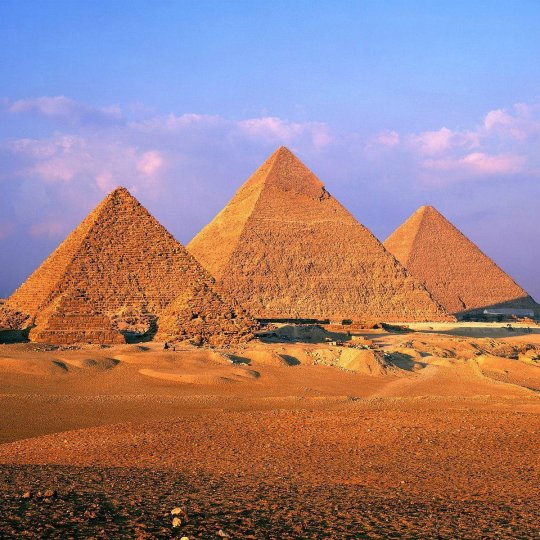
1 note
·
View note
Photo

Floral Garlands of Nany
Medium: Persea leaves, lotus petals, palm leaves, linen thread
Date: ca. 1050 B.C. (Third Intermediate Period)
Geography: From Egypt, Upper Egypt, Thebes, Deir el-Bahri, Tomb of Meritamun (TT 358, MMA 65), Mummy of Meritamun, MMA excavations, 1928–29
Accession Number: 30.3.33a
2 notes
·
View notes
Photo
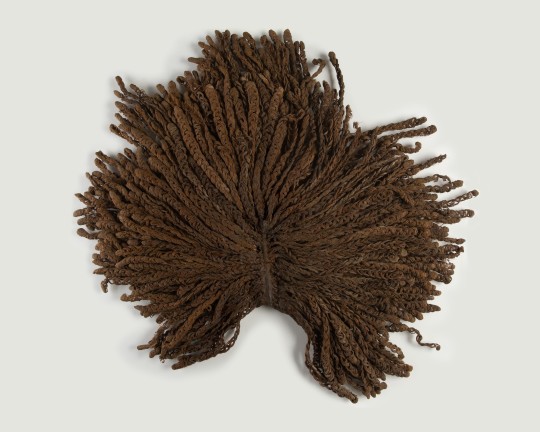
Wig, found in the tomb of Meritamun, 1040BC-992BC, Egypt.
163 notes
·
View notes
Photo

Scene of the weighing of the heart, from a copy of the “Book of the Dead” prepared for Nany, Singer of Amun. Artist unknown; ca. 1050 BCE (21st Dynasty, Third Intermediate Period). From the tomb of Meritamun at Deir el-Bahri; now in the Metropolitan Museum of Art.
#art#art history#ancient art#Egypt#Ancient Egypt#Egyptian art#Ancient Egyptian art#Egyptian religion#Ancient Egyptian religion#Anubis#Book of the Dead#21st Dynasty#Third Intermediate Period#papyrus#Egyptian Thebes#Metropolitan Museum of Art
709 notes
·
View notes
Text

The wig of Nauny. A 21st dynasty princess buried in the same tomb as the 19th dynasty queen Ahmose-Meritamun. It's made from Human hair treated with beeswax and animal fat. Egypt, 1040 to 992 B.C.
1 note
·
View note
Text
22 ancient Pharaohs have been carried across Cairo in an epic 'golden parade'
https://sciencespies.com/humans/22-ancient-pharaohs-have-been-carried-across-cairo-in-an-epic-golden-parade/
22 ancient Pharaohs have been carried across Cairo in an epic 'golden parade'
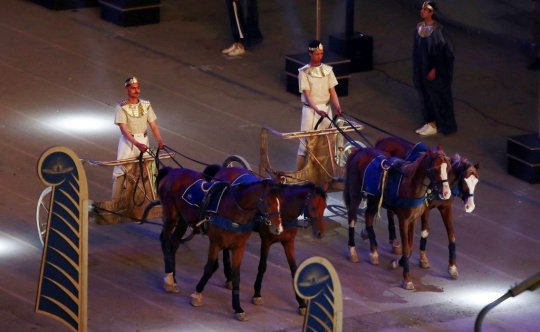
A procession of floats carried the mummified remains of 22 pharaohs, including Egypt’s most powerful ancient queen, through Cairo Saturday evening, in an eye-catching parade to a new resting place.
Under hefty security, the mummies were driven on floats seven kilometers (four miles) across the capital from the iconic Egyptian Museum to the new National Museum of Egyptian Civilisation.
Dubbed the “Pharaohs’ Golden Parade”, the 18 kings and four queens travelled in order, oldest first, each aboard a separate vehicle decorated in ancient Egyptian style.

(Ahmed Mahmoud/Sputnik/AFP)
Both pedestrians and vehicles were barred from Tahrir Square, site of the current museum, and other sections of the route.
Images of the slick parade and an equally carefully choreographed opening ceremony were broadcast live on state television, to rousing music.
The mummies entered the grounds of the new museum to a 21-gun salute, after a slightly shorter than expected journey time of around half an hour.

(Ahmed Mahmoud/Sputnik/AFP)
“This grandiose spectacle is further proof of the greatness… of a unique civilization that extends into the depths of history,” said President Abdel Fattah al-Sisi just ahead of proceedings.
Seqenenre Tao II, “the Brave”, who reigned over southern Egypt some 1,600 years before Christ, was on the first chariot, while Ramses IX, who reigned in the 12th century BC, brought up the rear.
Another great warrior, Ramses II, who ruled for 67 years, and Queen Hatshepsut, the most powerful female pharaoh, were also on the short voyage.
Emblazoned with the name of their allocated sovereign, the gold and black colored carriages were fitted with shock absorbers for the trip, to ensure none of the precious cargos were accidentally disturbed by uneven surfaces.
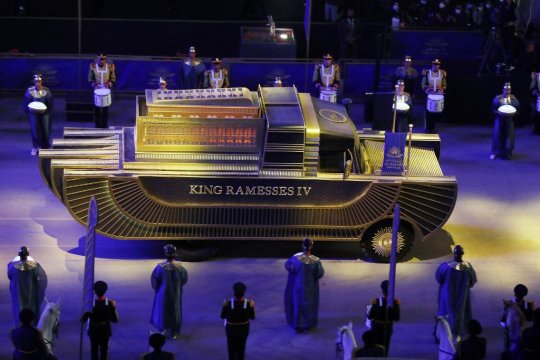
(Ahmed Mahmoud/Sputnik/AFP)
‘Upgraded cases’
Discovered near Luxor from 1881 onwards, fascinating new details of the pharaohs’ lives – and deaths – are still emerging.
A high-tech study of Seqenenre Tao II, involving CT scans and 3D images of his hands and long-studied skull fractures, indicate he was likely killed in an execution ceremony, after being captured in battle.
For their procession through Cairo’s streets, the mummies were placed in special containers filled with nitrogen, under conditions similar to their regular display cases.

(Mahmoud Khaled/AFP)
The new resting place, the National Museum of Egyptian Civilisation in the Fustat district of Old Cairo, consists of sleek, low-rise buildings topped with a pyramid amid expansive grounds.
The mummies will undergo 15 days of laboratory restoration before they are showcased individually in their new home, in an environment redolent of underground tombs.
They will be accompanied by a brief biography.
In their new home, they will occupy “slightly upgraded cases”, said Salima Ikram, professor of Egyptology at the American University in Cairo.
Temperature and humidity control will also be enhanced.
The “museum has what it takes to preserve (mummies), the best laboratories… it is one of the best museums we have,” Waleed el-Batoutti, adviser to the tourism and antiquities ministry, told state television.

(Ahmed Mahmoud/Sputnik/AFP)
‘Curse of the Pharaoh’
The National Museum of Egyptian Civilisation opened its doors to limited exhibits from 2017 and will open fully on Sunday, before the mummies go on display to the general public two weeks later.
In the coming months, the country is due to inaugurate another new showcase, the Grand Egyptian Museum, near the Giza pyramids.
It too will house pharaonic collections, including the celebrated treasure of Tutankhamun.
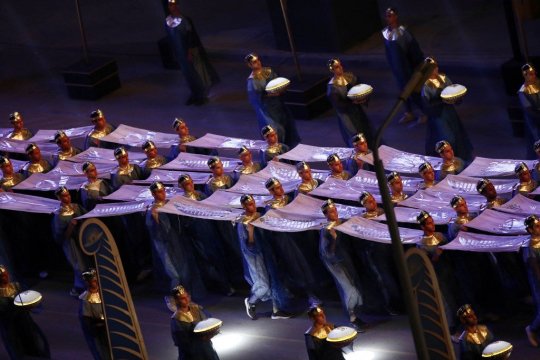
(Ahmed Mahmoud/Sputnik/AFP)
Discovered in 1922, the tomb of the young ruler, who took the throne briefly in the 14th century BC, contained treasures including gold and ivory.
A so-called “curse of the pharaoh” emerged in the wake of Tutankhamun’s unearthing in 1922-23.
A key funder of the dig, Lord Carnarvon, died of blood poisoning months after the tomb was opened, while an early visitor likewise died abruptly in 1923.
With the parade coming only days after several disasters struck Egypt, some inevitably speculated on social media about a new curse provoked by the latest move.
The past days have seen a deadly rail collision and a building collapse in Cairo, while global headlines were dominated by the struggle to refloat the giant container ship MV Ever Given which blocked the Suez Canal for almost a week.
The mummies’ re-housing “marks the end of much work to improve their conservation and exhibition,” said UNESCO Director-General Audrey Azoulay, who was in Cairo for the parade.
“This raises emotions that go much further than the mere relocation of a collection – we will see the history of Egyptian civilization unfold before our eyes.”
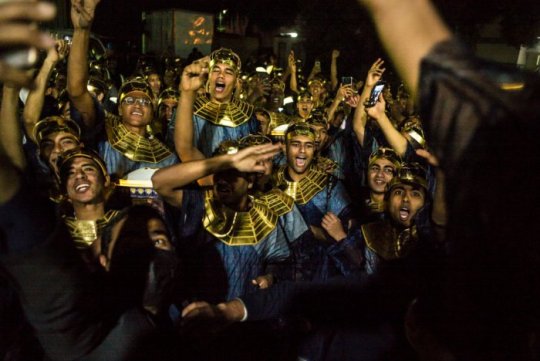
(Vassilis A. Poularikas / NurPhoto / NurPhoto via AFP)
Who are the pharaohs who moved home in Cairo?
Here is a list of the pharaohs being rehoused at the National Museum of Egyptian Civilisation and a description of each.
1 – Seqenenre Tao II, known as “the Brave”, he reigned over southern Egypt some 1,600 years before Christ and led a war against the Hyksos, a Semitic people who had invaded the country.
2 – Queen Ahmose-Nefertari, his powerful and influential daughter, she was married to her brother Ahmose I who was the first monarch of the 18th Dynasty.
3 – Amenhotep I, second pharaoh of the 18th Dynasty, he was a child when he became king and ruled with the help of his mother, Queen Ahmose-Nefertari.
4 – Ahmose-Meritamun, Ahmose-Nefertari’s daughter, she was both the older sister and wife of Amenhotep I.
5 – Thutmose I, the third pharaoh of the 18th Dynasty, he ascended the throne after Amenhotep I died without an heir and helped expand Egyptian rule in the south.
6 – Thutmose II, son of the previous king, married his half-sister Hatshepsut.
7 - Queen Hatshepsut, known as the “foremost of noble ladies”, she declared herself pharaoh although in ancient Egypt women could not accede to that role. But she rose to become a powerful monarch under whose rule numerous projects were built and trade with other countries flourished.
8 – King Thutmose III was remembered as one of the great warrior kings of the New Kingdom, whose battle at Megiddo is considered a model of military strategy.
9 – King Amenhotep II, his son, was known as an excellent charioteer and all-round athlete as well as skilled with bow and arrow.
He secured Egypt’s borders and fought military campaigns that secured immense wealth and power, and was also known for expanding the Karnak temple complex near Luxor.
10 – Thutmose IV, son of the previous king.
11 – Amenhotep III ruled for 37 or 38 years. His reign was known for its opulence and the grandeur of its monuments, including the Colossi of Memnon – two massive stone statues near Luxor that represent him and his wife.
12 – Queen Tiye was married to Amenhotep III.
13 – Seti I, son of Ramses I, ruled for at least 21 years during which he led several military campaigns to reimpose Egypt’s authority outside its borders.
His activities and victories were recorded in the temple of Amun at Karnak. His tomb in the Valley of the Kings is one of the best preserved royal sepulchres with vivid colours.
14 – Ramses II ruled for 67 years during which he was known as a great warrior and prolific builder who ordered the construction of temples across Egypt, including the famous Abu Simbel and the Ramessseum, his mortuary temple.
15 – King Merenptah, son of Ramses II, ruled 11 years.
16 – King Seti II, son of King Merenptah.
17 – King Siptah came to the throne during the 19th Dynasty as a child and his stepmother Taworset, wife of Seti II, acted as regent.
18 – Ramses III, king of the 20th Dynasty, was known as the last of the great warrior pharaohs of the New Kingdom.
Several papyri recount a so-called “harem conspiracy” involving high officials by his wife, minor queen Tiye, plotting to kill him to put her son Pentawer on the throne.
CT scans of his mummified body have shown that the king’s throat had been cut from behind.
19 – Ramses IV succeeded his father Ramses III but only ruled for six or seven years.
20 – Ramses V ruled for only about four years and died without an heir to the throne.
21 – Ramses VI, one of the sons of Ramses III, ruled for eight years.
22 – Ramses IX was the eight king of the 20th Dynasty who ruled for about 18 years.
© Agence France-Presse
#Humans
0 notes
Text

Wig - Met Museum Collection
Inventory Number: 30.3.35 Third Intermediate Period, Dynasty 21, ca. 1040–992 B.C. Location Information: From Egypt, Upper Egypt, Thebes, Deir el-Bahri, Tomb of Meritamun (TT 358, MMA 65), inside coffin, MMA excavations, 1928–29
Description:
This wig was found lying behind the head of Nauny's mummy in her inner coffin. It is made of braids of human hair fastened at the top with a cord. The braids were treated with beeswax and a layer of animal fat covers the entire wig.
#wig#met museum#upper egypt#thebes#deir el-bahri#deir el bahri#Tomb of Meritamun#third intermediate#dynasty 21#womens hair and wigs#TIWHW#30.3.35#Nauny
1 note
·
View note
Text

Outer coffin of Queen Ahmose-Meritamun
New Kingdom, early 18th Dynasty, ca. 1525-1504 BC. Tomb of Ahmose-Meritamun (TT358), Deir el-Bahari, Thebes. Now in the National Museum of Egyptian Civilization (NMEC), Cairo. CG 61052
The outer coffin is over 10 ft in size and is made from cedar planks which are joined and carved to a uniform thickness throughout the coffin. The eyes and eyebrows are inlaid with glass.
The body is carefully carved with chevrons painted in blue to create the illusion of feathers. The coffin was covered in gold which had been stripped in antiquity. The inner coffin was smaller, but still over 6 ft tall. The inner coffin had also been covered in gold but stripped of this precious metal.
Read more
318 notes
·
View notes
Photo

Detail of the Coffin of Ahmose-Meritamun The Outer coffin of Queen Ahmose-Meritamun, made of cedarwood, from the Tomb of Queen Ahmose-Meritamun (TT358) at Deir el-Bahari, West Thebes. She was both the sister and the wife of pharaoh Amenhotep I. New Kingdom, early 18th Dynasty, reign of Amenhotep I, ca. 1525-1504 BC. Now in the Egyptian Museum, Cairo. #egyptology_misr #Egypte #Agypten #Egipt #Egipto #Egitto #Египет #مصر #मिस्र #エジプト #埃及 #Egypten #Visit_Egypt #discover_Egypt #Experience_Egypt #diving #socialmedia #egypt #iloveegypt #luxor #karnak #mylifesamovie #mylifesatravelmovie #travelblog #travelblogger #solotravel #wanderlust #gopro #egyptology #ancientegypt (at Egyptian Museum) https://www.instagram.com/p/CEVEXOBFnCC/?igshid=q76zcbt95lwb
#egyptology_misr#egypte#agypten#egipt#egipto#egitto#египет#مصر#मिस्र#エジプト#埃及#egypten#visit_egypt#discover_egypt#experience_egypt#diving#socialmedia#egypt#iloveegypt#luxor#karnak#mylifesamovie#mylifesatravelmovie#travelblog#travelblogger#solotravel#wanderlust#gopro#egyptology#ancientegypt
0 notes
Photo

Coffin of Ahmose-Meritamun The Outer coffin of Queen Ahmose-Meritamun, made of cedarwood, from the Tomb of Queen Ahmose-Meritamun (TT358) at Deir el-Bahari, West Thebes. She was both the sister and the wife of pharaoh Amenhotep I. New Kingdom, early 18th Dynasty, reign of Amenhotep I, ca. 1525-1504 BC. Now in the Egyptian Museum, Cairo. JE 53140 #egyptology_misr #Egypte #Agypten #Egipt #Egipto #Egitto #Египет #مصر #मिस्र #エジプト #埃及 #Egypten #Visit_Egypt #discover_Egypt #Experience_Egypt #diving #socialmedia #egypt #iloveegypt #luxor #karnak #mylifesamovie #mylifesatravelmovie #travelblog #travelblogger #solotravel #wanderlust #gopro #egyptology #ancientegypt (at Egyptian Museum) https://www.instagram.com/p/B4VfN1Hlygl/?igshid=1m8c37x9ms9w5
#egyptology_misr#egypte#agypten#egipt#egipto#egitto#египет#مصر#म#エジプト#埃及#egypten#visit_egypt#discover_egypt#experience_egypt#diving#socialmedia#egypt#iloveegypt#luxor#karnak#mylifesamovie#mylifesatravelmovie#travelblog#travelblogger#solotravel#wanderlust#gopro#egyptology#ancientegypt
0 notes
Photo

Mummy of Queen Ahmose-Meritamun Ahmose-Meritamun was the royal daughter of Ahmose I and Ahmose-Nefertari, She was both the sister and the wife of Amenhotep I (r. ca. 1525-1504 BC). Queen Ahmose-Meritamun’s mummy was buried in tomb (TT358) in Deir el-Bahari in two cedarwood coffins and a cartonnage outer case, which is now damaged. Cartonnage is linen or papyrus held together by glue and molded into coffins. The tomb, in antiquity, had been robbed and apparently the mummy was plundered. Nevertheless, during the 21st Dynasty, the tomb was restored and the mummy was rewrapped. When scholars unwrapped the mummy, the queen was found to have wavy brown hair. From examination it appears that she may have died in her fifties, possibly because of scoliosis, from which she suffered in her last days. Scoliosis is an abnormal lateral curvature of the spine. From the Tomb of Queen Ahmose-Meritamun (TT358), Deir el-Bahari, West Thebes. Now in the Egyptian Museum, Cairo. CG 61052 #egyptology_misr #Egypte #Agypten #Egipt #Egipto #Egitto #Египет #مصر #मिस्र #エジプト #埃及 #Egypten #Visit_Egypt #discover_Egypt #Experience_Egypt #diving #socialmedia #egypt #iloveegypt #luxor #karnak #mylifesamovie #mylifesatravelmovie #travelblog #travelblogger #solotravel #wanderlust #gopro #egyptology #ancientegypt (at Egyptian Museum) https://www.instagram.com/p/B2hdFK0Fqxt/?igshid=vpspuh8qjwpf
#egyptology_misr#egypte#agypten#egipt#egipto#egitto#египет#مصر#म#エジプト#埃及#egypten#visit_egypt#discover_egypt#experience_egypt#diving#socialmedia#egypt#iloveegypt#luxor#karnak#mylifesamovie#mylifesatravelmovie#travelblog#travelblogger#solotravel#wanderlust#gopro#egyptology#ancientegypt
0 notes